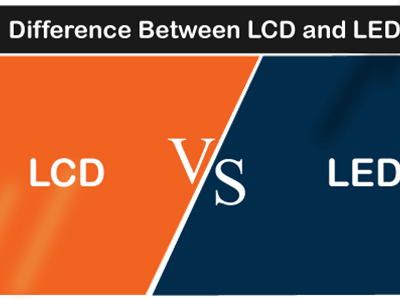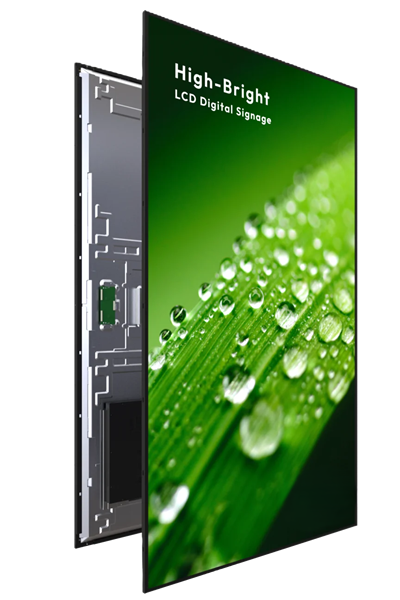Digital Signage Showdown: LED vs. LCD - The 2025 Definitive Guide
Digital Signage Showdown: LED vs. LCD - The 2025 Forecast
LCD vs. LED: Choosing the Right Display Technology for Your Digital Signage Needs
published: 14 Jan 2025

The Evolution of Digital Display Technology
In 2025, digital signage has become an integral part of our visual landscape. From bustling city centers to quiet corporate offices, these vibrant displays shape our experiences and interactions. But with technology advancing at breakneck speed, how do you choose between LED and LCD? Let's dive into the details.
LED vs. LCD: Understanding the Basics
In the world of digital signage, LCD (Liquid Crystal Display) technology remains a powerful and reliable contender in 2025. While LED displays have gained attention for their brightness, LCDs continue to hold strong due to their affordability, versatility, and performance in a variety of environments.
LCD Display Technology: The Renaissance
Liquid Crystal Display (LCD) technology has undergone a revolutionary transformation:
Advanced Local Dimming:
- Boosts energy efficiency by up to 35%
- Enhances contrast ratios to rival OLED technology
- Provides deeper blacks and brighter whites
Quantum Dot Technology:
- Expands color gamut to cover 95% of DCI-P3 color space
- Improves color accuracy and vibrancy
High Dynamic Range (HDR):
- Supports multiple HDR formats including HDR10+ and Dolby Vision
- Enhances image depth and realism
Improved Viewing Angles:
- Advanced IPS and VA panels offer viewing angles up to 178 degrees
- Maintains color consistency across wider viewing angles
Enhanced Brightness:
- New models achieve up to 4000 nits peak brightness
- Competitive in various lighting conditions, including semi-outdoor environments
Cost-Effectiveness:
- Lower initial investment compared to equivalent LED displays
- Reduced power consumption leads to lower operational costs
LED Display Technology: The Established Powerhouse
Light Emitting Diode (LED) displays continue to offer:
Exceptional Brightness:
- Capable of achieving over 5000 nits
- Ideal for outdoor and high-ambient light environments
Modular Design:
- Allows for creative, custom-shaped installations
- Easier maintenance with replaceable modules
Long Lifespan:
- Often exceeding 100,000 hours of operation
- Lower long-term replacement costs
Wide Color Gamut:
-
- Covers over 100% of the Rec. 2020 color space
- Vibrant and saturated colors for impactful visuals

The Ultimate Comparison: LCD vs. LED in 2025
| Feature | LCD Displays | LED Displays | Rating (LCD) | Rating (LED) |
|---|---|---|---|---|
| Technology | Liquid crystal display with LED backlighting | Light-emitting diodes | ||
| Initial Cost | More affordable | Higher upfront cost | ⭐⭐⭐⭐⭐ | ⭐⭐ |
| Brightness | Up to 4000 nits | 5000+ nits, ideal for bright environments | ⭐⭐⭐⭐ | ⭐⭐⭐⭐⭐ |
| Energy Consumption | 250W per 55" display | 600W per 55" display | ⭐⭐⭐⭐⭐ | ⭐⭐⭐ |
| Resolution | Higher pixel density, up to 4K UHD | Lower for large displays, but improving | ⭐⭐⭐⭐⭐ | ⭐⭐⭐ |
| Viewing Angle | 160°-178° | 178° or more | ⭐⭐⭐⭐ | ⭐⭐⭐⭐⭐ |
| Design Flexibility | Mostly flat panels | Curved, custom shapes possible | ⭐⭐⭐ | ⭐⭐⭐⭐⭐ |
| Outdoor Performance | Superior in harsh conditions | Superior in harsh conditions | ⭐⭐⭐⭐ | ⭐⭐⭐⭐⭐ |
| Maintenance | Lower maintenance | Regular LED module inspection | ⭐⭐⭐⭐⭐ | ⭐⭐⭐ |
| Lifespan | 50,000-70,000 hours | 100,000+ hours | ⭐⭐⭐⭐ | ⭐⭐⭐⭐⭐ |
| Local Dimming Technology | Advanced, Up to 35% energy savings | Standard efficiency | ⭐⭐⭐⭐⭐ | ⭐⭐⭐⭐ |
| Sustainability | Eco-friendly materials | Improving sustainable practices | ⭐⭐⭐⭐ | ⭐⭐⭐ |

The Game-Changer: Local Dimming Technology in LED
How Local Dimming Revolutionizes LCD Displays
Local dimming has transformed LCD technology, addressing previous limitations:
- Energy Efficiency
- Reduces power consumption by up to 35%
- Significantly lowers operational costs
- Meets sustainability goals
- Enhanced Visual Performance
- Improved contrast ratios
- Deeper blacks and brighter whites
- More dynamic image quality

Choosing the Right Display for Your Needs
When to Choose LCD
- Budget-conscious projects
- Indoor and high-traffic outdoor environments
- High-resolution content
- Better viewing angles
- Superior color consistency
- Energy-efficient with local dimming
When to Choose LED
- Large-scale outdoor installations
- High-brightness environments
- Creative architectural displays
- Dynamic video walls

Future Trends in Digital Signage
- AI-powered content personalization
- Touchless interactive displays
- IoT integration for smart, responsive signage
- Sustainable materials and energy-saving features
- 5G connectivity for real-time content updates
Making the Right Choice for Your Business
Consider these factors:
- Location: Will the display be used indoors or in high-traffic outdoor areas?
- Viewing Distance: Is the content intended for close-up or long-distance viewing?
- Budget: Do you need to prioritize initial cost, or is long-term energy savings a key consideration?
- Content Type: Will the display be showcasing static images or dynamic videos?
- Environmental Conditions: Will the display be exposed to bright sunlight or placed in controlled lighting conditions?
Conclusion:
In 2025, the choice between LCD and LED for digital signage ultimately depends on your specific needs. LCD displays offer outstanding value for both indoor and outdoor use, with exceptional clarity, energy efficiency, and cost-effectiveness, making them a reliable choice for a variety of applications. Their versatility, combined with features like local dimming for improved image quality, makes them ideal for environments where close-up viewing and high-resolution content are essential.
While LED displays remain a strong contender for large-scale, high-brightness installations, LCD's ability to balance performance, affordability, and long-term reliability positions it as the preferred choice for businesses looking to enhance their digital signage strategy in 2025.
Choosing the right display technology will depend on factors such as location, content type, and budget. By carefully evaluating these considerations, you can ensure your signage solution meets your business's goals and provides lasting impact.
For cutting-edge, high-brightness, and low-power LED solutions featuring advanced local dimming technology—offering up to 35% energy savings while delivering exceptional efficiency—explore the innovative offerings from Praevar to discover what sets them apart.